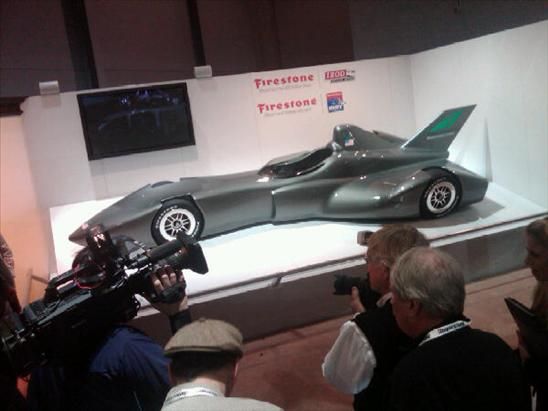Power to Weight and Open Engine Rules
 |
| Firestone and automotive manufacturers have voiced support for the Delta Wing concept because it is relevant to their products. |
Our series on the Delta Wing has been a seven-part series intended to inform our readers of the depth of this design. We simply think that people need to take a close look at this concept to fairly judge it. Not that we delve into general politics, but much like the healthcare issue that was fraught with lack of information and all kinds of non-factual statements, we think the Delta Wing concept has not been fairly evaluated or understood by the public. So, in an effort to even the playing field among all of the concepts, we wanted to simply put the various features of this concept into play.
This final installment talks about the final feature of the concept that we chose to highlight, and then we will get into a summary of the concept, and tell you what we think. Beyond that you can decide for yourself, and it appears that the fans will have some input here, which is a great way of doing business when your livelihood ultimately depends on those fans.
This segment is about power to weight ratio and power plant options. These are very key points, and refute the notion that this would be a spec chassis concept.
Contrary to all the other chassis proposals, this concept is not a spec chassis concept. It is more like an open-source software approach. The chassis will be a base starting point from which development may occur. After a certain period of time, those development designs would be posted and would be available to everyone through a website that is available to anyone.
Engines will not be spec either. Since the chassis does not have a stressed-member mount of the power plant, virtually any sort of engine might be dropped in there.
The power to weight issue is especially significant here, since that will be the primary governing point for approval of various power plants. Maintaining a similar power to weight ratio will be the means by which parity is maintained. This has been well demonstrated in various other series, mainly in the touring and sports car racing world.
The power to weight feature is also key in keeping the types of engines more relevant to manufacturers that might want to go IndyCar racing, not only as a marketing vehicle, but also as a development platform. This is something that many racing series have lost entirely, and to the behest of the manufacturers. IndyCar racing was founded on this…even the rear view mirror in your car today first showed up in an IndyCar.
With an applied power to weight ratio, the manufacturers will be able to install engines that are much closer to that which they install in the cars that people buy every day.
Additionally, this opens up the formula to all kinds of various engine options, such as rotary engines, hybrid and electric power plants, as well as engines that run an all kinds of various fuels. That most certainly makes IndyCar racing relevant again.
Finally, turning a lap as fast as the current generation of IndyCars with half the horsepower certainly vaults IndyCar racing into the relevancy of today's eco-conscious world as well, showing that you can have performance and be green at the same time.
It really is a fairly simple, yet very important element of this concept.
Getting into a summary of what we have covered, there are many elements of the Delta Wing design that make it more than just a chassis proposal. It is a revolution in the sport.
The weight distribution and rearward down force bias make for a car that will add a real driver element to the racing, and create very close racing that will be exciting for the fans.
The cost will be considerably lower due to design elements of the base chassis, including an active differential that will have major impact on tire manufacture and supply.
Manufacturer interest will be much higher as a result of increased relevancy of the formula to real world cars.
With lower costs, a non-spec formula, opportunity for development and different power plants, better closer racing, and higher safety…how could we not endorse this concept? Aren't those all things we want and need in IndyCar racing?
Look at all the criticism in F1 today because the races are rather processional. Might the Delta Wing concept work for F1 too?
If there is another way to achieve more exciting racing that is more relevant to the automotive industry and more eco-friendly, with as much a certainty as the Delta Wing group has about their concept, we would like to see it.
Some have been politely critical of our focus on the Delta Wing. We can assure you that we are not shills for anyone's agenda. We have focused on this because it is revolutionary in every sense, where the other concepts are surely all great cars from excellent manufacturers, but all spec proposals and with mild evolutions of the current generation of open wheel racing cars.
It is a radical design that makes sense, once you take the time to understand it. We have to wonder if fans will have that kind of open mind and patience. So far, in our non-scientific survey, opinion seems mixed.
One thing can be said for sure; IndyCar racing needs a change. Maybe this is it…maybe it is too much at once. You fans will have a chance to voice your input, and we hope we have been able to provide some factual insight into the concept.
